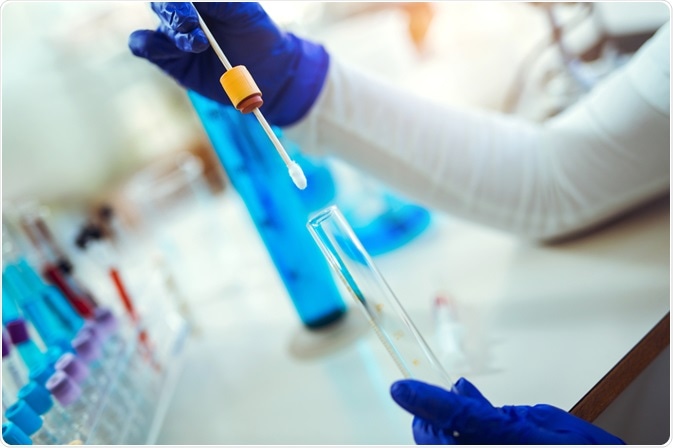Microbial forensics refers to the investigation of the use of bioweapon, and the accidental release or natural development of dangerous microorganisms. The term may also include the study of a person’s specific microbiome for means of identification, the location of a crime and the time of death of an individual based on the progress of the microbiome during decomposition.
 adriaticfot | Shutterstock
adriaticfot | Shutterstock
What are bioweapons?
Bioweapons encompass the use of any biological entity for the purpose of damaging the health of other living creatures. Most bioweapons concern the use of microorganisms such as bacteria, fungi, or viruses.
Specially designed bioweapons may be engineered to function only in specific environments or to only affect animals or plants with particular features. These specifications are made to ensure that the weapon does not also affect the user. They may be intended to directly kill those exposed within a short time, or they may be designed to spread an agent as greatly as possible from the infected to cause maximal damage.
Bioweapons may also be engineered to damage the infrastructure of a target, as in destroying plant crops or livestock. Insects may also be used as vectors for diseases such as bubonic plague.
What do microbial forensics experts do?
Microbial forensics investigators seek to establish the specific identity of a microorganism threat, discover the source of the threat, and to estimate the impact of such a threat.
Uncovering the identity of a biological threat is often relatively simple once samples are available, as simple biological tests can be performed to determine the exact strain of microorganism.
Polymerase chain reaction (PCR) may be performed to amplify the quantity of DNA or RNA available from a small sample volume, whereas techniques such as enzyme-linked immunosorbent assay (ELISA) can be used to identify the presence of particular proteins that are unique to some bacteria or viruses. Many bacteria can also be identified using common staining and microscopic examination.
Identifying the precise nature of a threat can be complicated by limited knowledge of the regular microbiome from where the sample was collected. Thus, differentiating between normal flora and dangerous introduced microorganisms may be difficult.
The symptoms caused by bioweapon exposure help narrow the possibilities of which microorganisms were used to focus on fewer diagnostic tests. For example, anthrax infection begins with ordinary flu-like symptoms and quickly progresses to lung hemorrhaging, and so the clinical picture of affected persons can pinpoint the most likely causes.
Establishing the source of a biological threat is often difficult. Traditional forensics play an important role, particularly in discovering the identity of a perpetrating individual or organization that falls under the purview of law enforcement organizations.
Microbial forensics may help identify such groups by providing information about the sophistication of the particular biothreat. For example, the use of genetically modified strains of microorganisms may be suggest that the perpetrator is well-funded, whereas a lone perpetrator is likely to leave physical and chemical evidence of the production process used to grow the strain.
Naturally occurring threats are more likely to have a well-documented lead up and a more predictable route and rate of spread through the population. Methicillin-resistant Staphylococcus aureus (MRSA) is a good example of such a threat; it has been studied since the 1970s, and great efforts have been put in place to control it.
Further Reading
Last Updated: Feb 12, 2019